
Let's talk Alaskan Malamutes
Despite a name derived from a northernmost region, the Alaskan Malamute is anything but cold-tempered, in fact, they are quite the opposite. The spitz-type breed – characterised by a curled tail, erect ears, and thick, dense fur – carries a disposition that’s as big as their hulking body. The Alaskan Malamute breed is the largest of sled dogs and a born pack animal. Bringing them into your human pack then, will suit them just fine.Official name: Alaskan Malamute
Origins: United States of America

| Drooling tendencies |
|
Warm weather? | |
| Shedding level | Suited to apartment living? | ||
| Energy level (high, low, medium) *: | High | Family pet? * |
 |
| Compatibility with other pets |  |
Can stay alone?* |  |
* We advise against leaving pets alone for long stretches. Companionship can prevent emotional distress and destructive behaviour. Speak to your veterinarian for recommendations.
Every pet is different, even within a breed; this snapshot of this breed’s specifics should be taken as an indication.
For a happy, healthy and well-behaved pet, we recommend educating and socialising your pet as well as covering their basic welfare, social and behavioural needs.
Pets should never be left unsupervised with a child.
All domestic pets are sociable and prefer company. However, they can be taught to cope with solitude from an early age. Seek the advice of your veterinarian or trainer to help you do this.
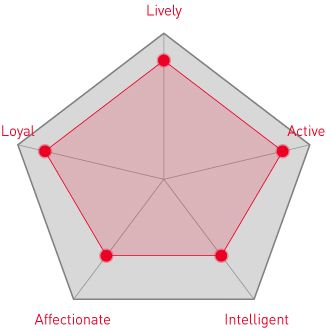

| Baby age: | Birth to 2 months |
| Puppy age: | 2 to 15 months |
| Adult age: | 15 months to 5 years |
| Mature age: | 5 to 8 years |
| Senior age: | From 8 years |
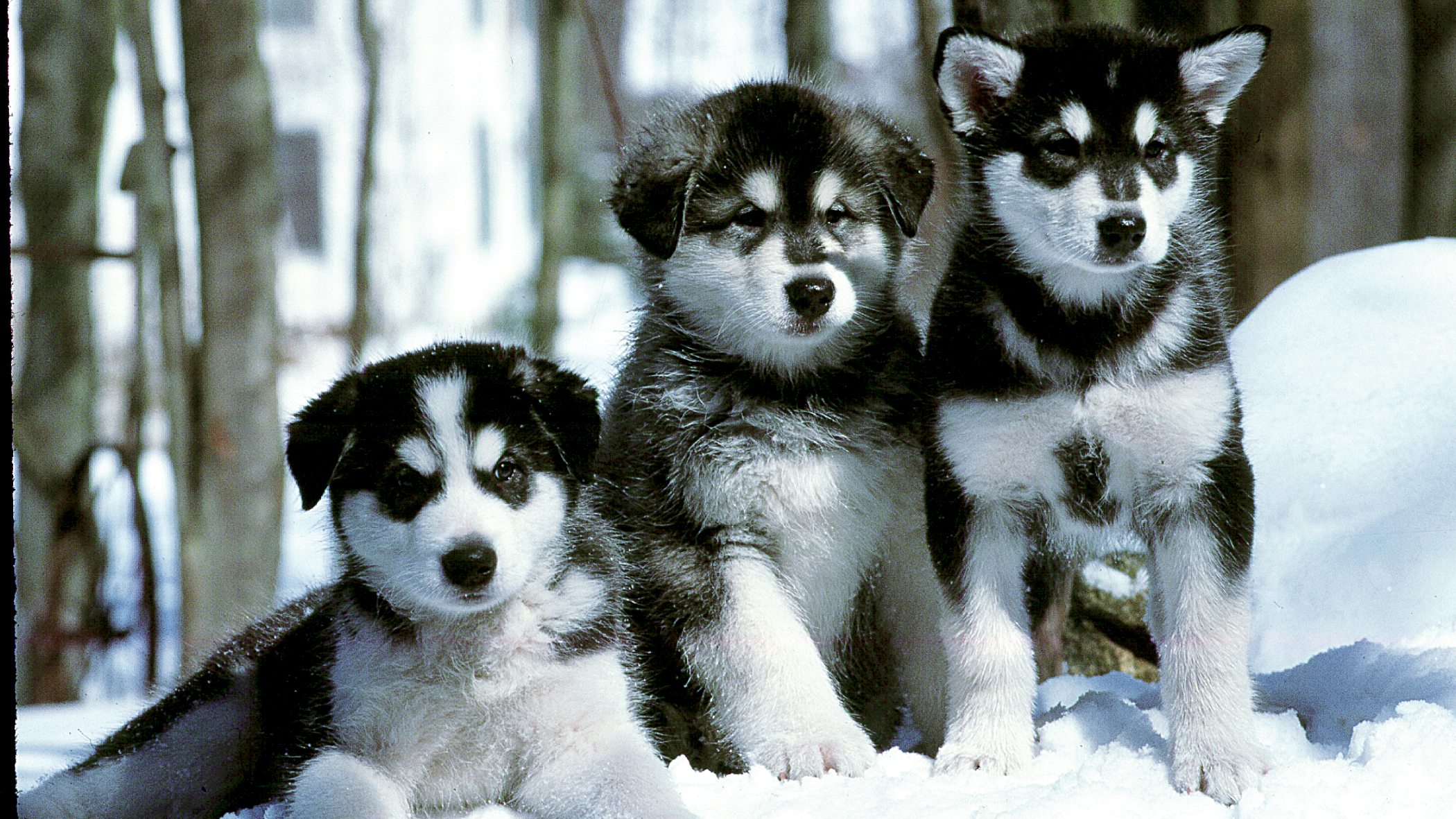
1/7
Get to know the Alaskan Malamute
All you need to know about the breed
Fluffy and affectionate, the Alaskan Malamute is a carefree dog that has family top of mind and their job next. The breed’s deep wide chest, substantial limbs, and large head signal “working dog”. Originally bred as a sled dog in the far reaches of, you guessed it, Alaska, they were used to run over large distances at low speeds to haul heavy goods.
They have now developed into a gentle breed that’s known to be great with everyone, especially children. The Alaskan Malamute temperament helps them fit right in with the pack at home, sledders or not. They bond with their family, but will only do so if training is firm early on. Once the boundaries are set, the breed is a snuggler extraordinaire.
The Alaskan Malamute’s signature plush fur will need regular upkeep, including daily brushing with a metal comb and pin brush, and an undercoat rake added during the moulting season twice a year.
The Alaskan Malamute can typically reach up to 85 pounds in size and is equipped with enormous strength. They are a spitz-type dog, the hallmark of which is a tail that curves over their back and a sturdy body doused in thick fur. The Alaskan Malamute’s daily exercise doesn’t have to come in the form of pulling sleds: They fully enjoy obedience and agility trials, and outdoor sports, including hiking and even swimming. The perfect companion to an outdoorsy, active owner.
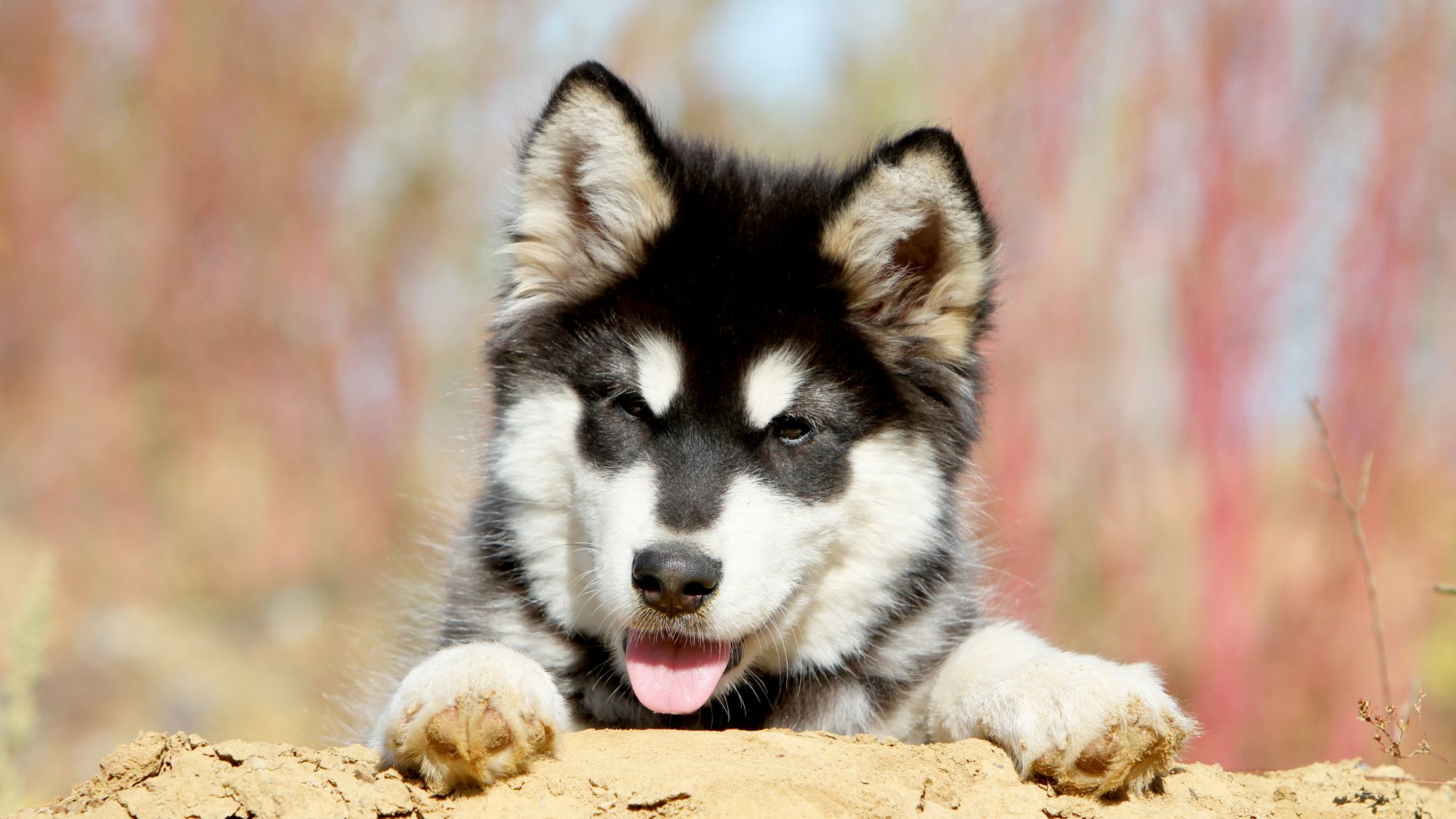
2/7
2 facts about Alaskan Malamutes
1. A special way of communicating
Most dogs bark but the Alaskan Malamute is on the quiet side. How do they communicate? By emitting a funny sound akin to “woo-woo.” The breed will also at times let out a howl, particularly when they’re lonely or bored.
2. Let’s be friends!
Being greeted at the door by a furry face like this breed is a great surprise. But the Alaskan Malamute personality is just that delightful. There are few people whom the Malamute won’t want to say hi to – and trust – given their pleasant face and even-keeled disposition. That said, security is not their strong suit.
History of the breed
The 49th U.S. state is indeed the namesake of the Alaskan Malamute, but the breed’s name comes from the Mahlemiut, a group of Inuit people who lived on the Kotzebue Sound in northwestern Alaska. The breed, though, is said to have first come from a wolf-dog some 4,000 years old who accompanied Paleolithic hunters when they traversed land bridges of the Bering Strait into North America. The Alaskan Malamute dogs were used for their hulking body that could pull sleds full of cargo over these long icy distances.
Various Malamute varieties developed over the years, since the Inuit culture spans much of the northernmost territory stretching all the way to Greenland.
The American Kennel Club recognised the initial Kotzebue strain in 1935, and two other Inuit strains after World War II when the breed’s numbers had dropped drastically and by the Fédération Cynologique Internationale (FCI) in 1963.

4/7
From head to tail
Physical characteristics of Alaskan Malamutes
1. الأذنان
آذان مرنة ولكن ليست ثقيلة تتدلى بجانب رأس الكلب
2. الشعر
شعر قصير وكثيف فوق طبقة سفلية مقاومة للماء
3. الفراء
فراء يتراوح بين الأسود إلى لون الشوكولاتة أو الأصفر، ومن الكريمي الفاتح إلى المحمر
4. الذيل
ذيل منتصب وهو بطبيعته طويل ونادرًا ما يتوقف عن الاهتزاز – والجسم كله يمكن يهتز في بعض الأحيان.
5. الساقان والعمود الفقري
متناسب بشكل جيد، مع توازن جيد بين طول الساق والعمود الفقري.
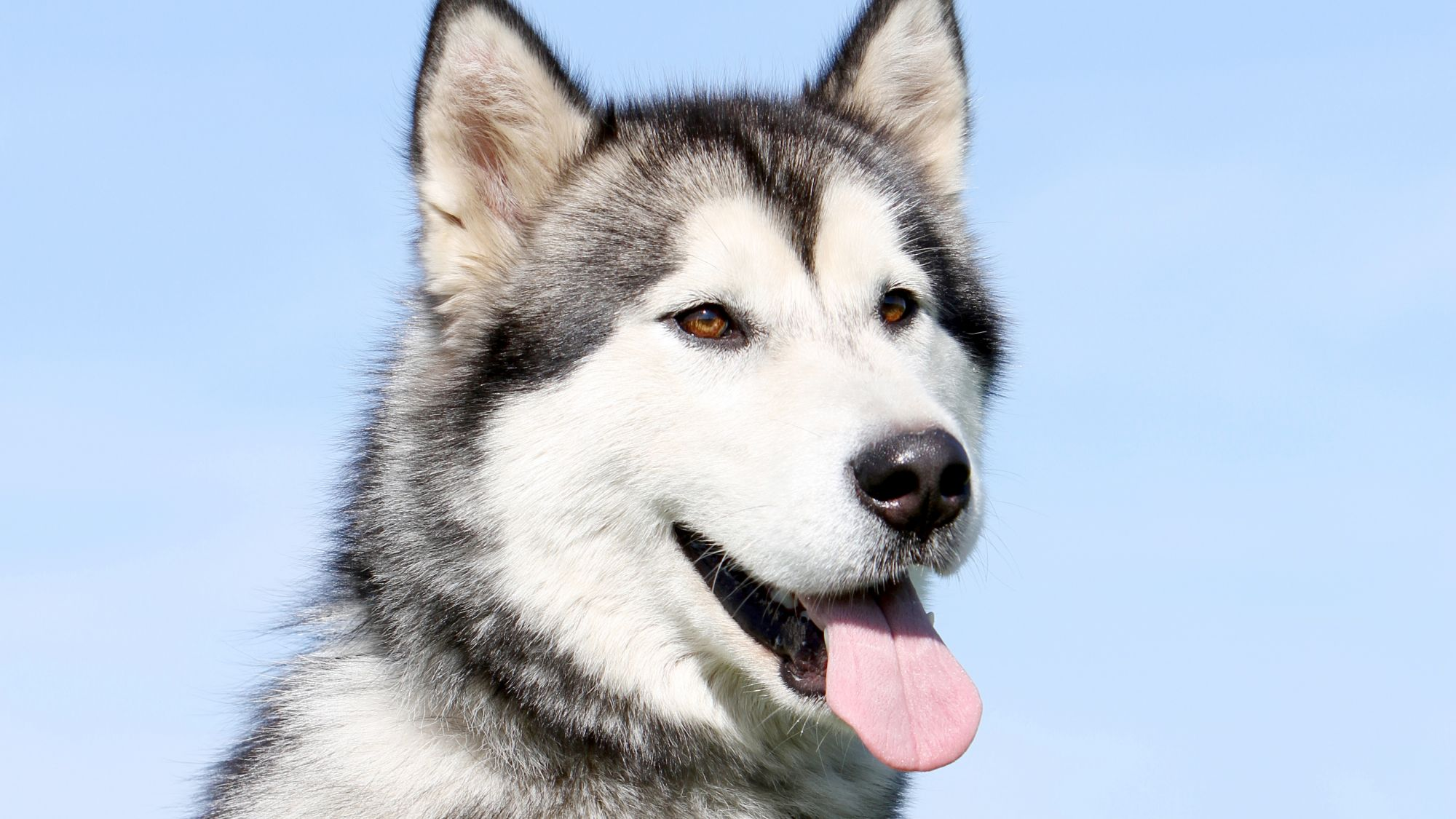
5/7
Things to look out for
From specific breed traits to a general health overview, here are some interesting facts about your Alaskan Malamute
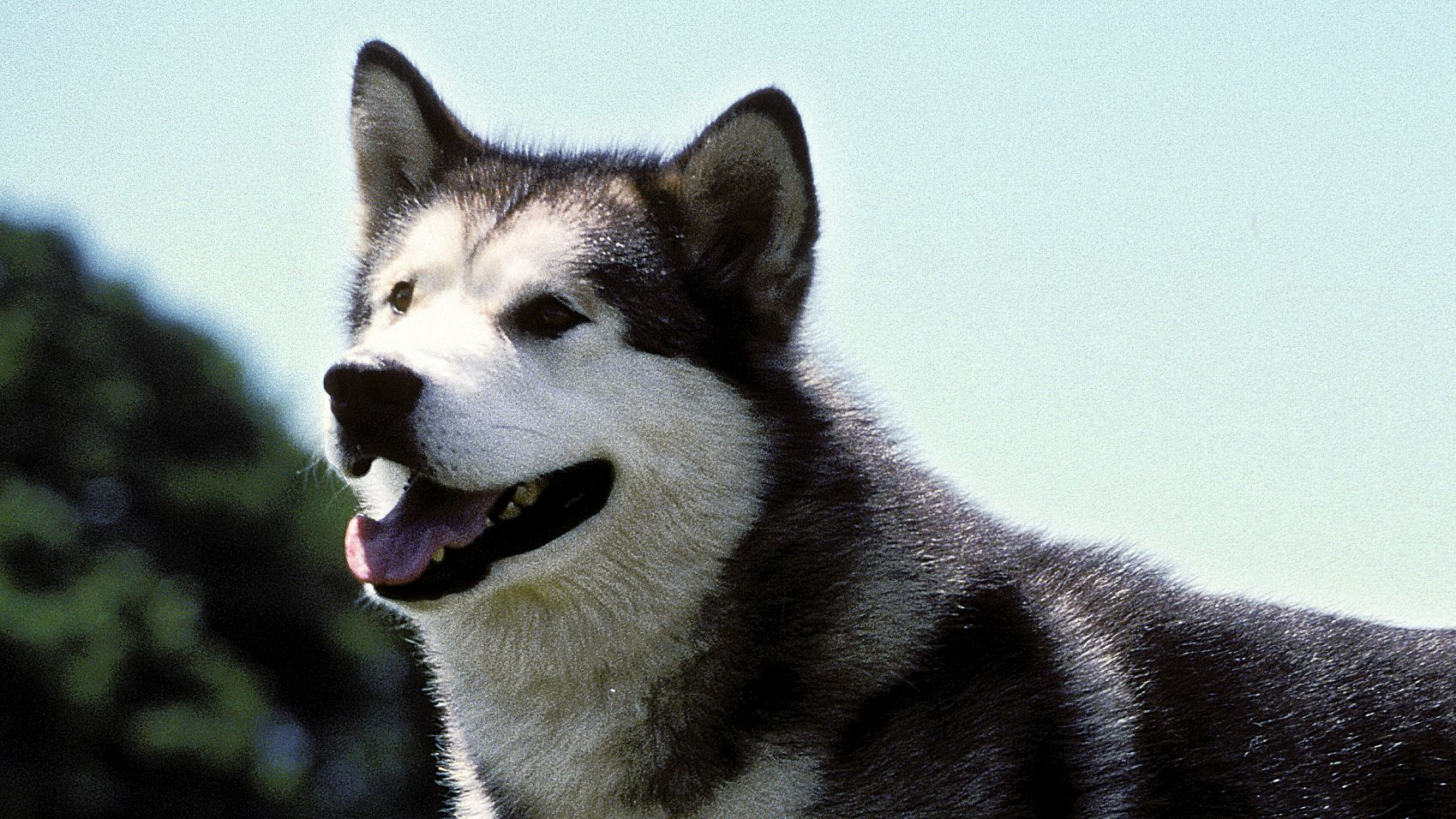
6/7
Caring for your Alaskan Malamute
Grooming, training and exercise tips
What price beauty! Shedding for the Alaskan Malamute will be almost constant so daily brushing with a metal comb and pin brush is best; add an undercoat rake during moulting season twice a year and check for mats. Their coarse coat should be bathed every six to eight weeks, with conditioner suitable for dogs used to keep it on the soft side. And make sure to remove any bits of plants, sticks, or earth that may be trapped in the coat. Endurance is the name of the game for the highly active Alaskan Malamute who needs lots of exercise. As a former sled dog, pulling, running, hiking, and climbing are all welcome; if those aren’t possible, good old walks will do! High intelligence is a hallmark of the Alaskan Malamute therefore training should be very firm and resolute from the get-go, or you will be ruled by the dog and not the other way around. Watch for their high prey drive with small animals, including small dogs, which makes introductions key.7/7
All about Alaskan Malamutes
Both breeds are more similar than they are different. They have friendly temperaments and are not prone to barking, both are ancient breeds used as sled dogs, and from the start considered members of the family so are very protective as a result. Siberians are harder to train so will need a very experienced owner. Where they differ most is in size: Alaskan Malamutes are larger than Siberians, but both breeds are doused with the recognisable bushy tail.
A tall dog that can weigh up to 100 pounds, the Alaskan Malamute is a handful so needs an owner that’s prepared. The breed is not one for an inexperienced owner, nor for small spaces as they need room to run and exercise. The Alaskan Malamute also tends to shed a lot so be prepared for brushing. And vacuuming.
Read more on this topic


How to adopt a dog

Things to consider before getting a dog
Sources
1 - Veterinary Centers of America https://vcahospitals.com/
2 - Royal Canin Dog Encyclopaedia. Ed 2010 and 2020
3 - Banfield Pet Hospital https://www.banfield.com/
4 - Royal Canin BHN Product Book
5 - American Kennel Club https://www.akc.org/
